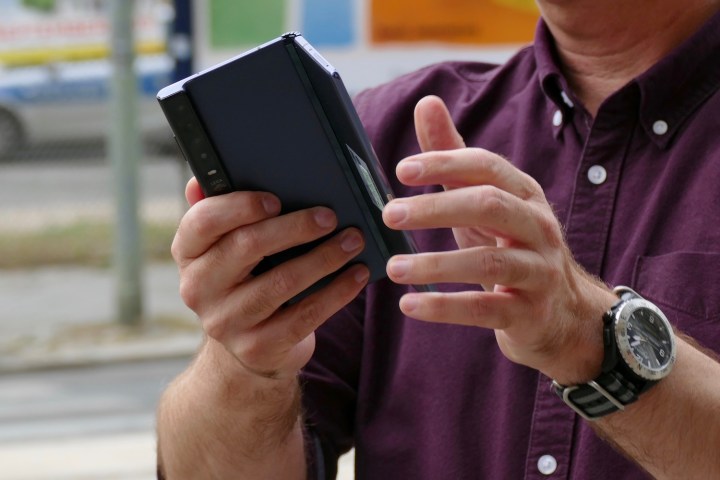
Though times are turbulent for Huawei, it has still managed to ship 200 million smartphones already this year, beating a previous record, and has finally given its folding smartphone — the Huawei Mate X — a release date. Before you get too excited about potentially buying the Mate X, the phone has only been announced for China so far.
The Mate X was first shown at Mobile World Congress earlier this year, but suffered several delays since then, primarily to do with software and app compatibility, and the speed with which 5G networks were being launched following its announcement. Huawei has repeatedly said that aside from those issues, the phone has been ready for launch since mid-year.
This is Huawei’s third 5G phone, following the Mate 20 X 5G and the Mate 30
While the Mate X’s release is exciting, Huawei has also announced that this year so far it has shipped 200 million smartphones already, beating the time it took to reach this milestone by 64 days when compared to last year. Huawei has been battling against a trade restriction with the U.S., which has stopped it from working with Google and other suppliers, making this number all the more impressive. However, its most recent phone — the Mate 30 Pro — comes without Google services, and the effect this has on international sales will be visible in figures released in 2020.
The Mate X folding phone will be released in China on November 15, and if you’re sitting down, I’ll tell you the price: the local equivalent of $2,400. That’s a little over $400 more than the Samsung Galaxy Fold, which after its own set of problems, is currently available to buy in the U.S., the U.K., and a few other select locations around the world.
Editors' Recommendations
- New OnePlus budget phone comes packing 2 super-rare features
- I’ve used Android phones for 10 years, and I hate these ones the most
- HMD Global wants you to keep your new Nokia phone and save the planet
- Oppo’s slick Find X5 Pro is a phone loaded with potential
- Your $1,000 flagship may not have faster 5G speeds than a budget phone



